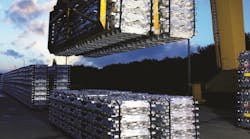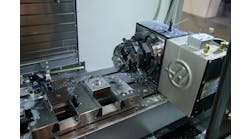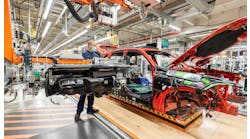Alcoa CEO: Tariffs Not Spurring Plans to Restart Idled Plants
Executives of Alcoa Corp. estimate that newly instituted or ramped-up tariffs on aluminum products will cost the company a net $100 million this year, with higher prices for American-made aluminum being more than offset by about $400 million worth of Section 232 tariffs on metal Alcoa produces in Canada and ships to U.S. customers.
CEO Bill Oplinger and CFO Molly Beerman outlined those factors and others April 16 after Alcoa reported first-quarter earnings of $548 million on sales of nearly $3.4 billion. Those numbers included about $20 million of Canadian tariff costs incurred from March 12 through the end of last month.
Despite the extraordinary noise around tariffs and their potential impact on the world’s trade flows, Alcoa’s leaders are sticking to their previous 2025 production and shipment targets for both alumina and aluminum. (Beerman said the only adjustment her team is making to 2025 estimates is a $20 million trimming of Alcoa’s depreciation expense due to recent currency exchange rate swings.) Oplinger said customers showed “some supportive signs on the demand” during the first three months of the year but noted that higher North American volumes may have been supported by companies buying in advance of tariffs coming into effect.
Taking into account those market signals and the general state of play, Oplinger reiterated a point he made nearly two months ago when asked about Alcoa possibly bringing back online idled parts of its Warrick plant in southern Indiana.
“It’s hard to make a restart decision based on a tariff that can change,” Oplinger told analysts on a conference call. “We just don’t know whether they will stick. And we wouldn’t necessarily make a decision to restart capacity simply based on tariffs just because they can change.”
Instead of restarting idled capacity, Oplinger said “the most efficient aluminum supply chain” is shipping product from Canada. About 70% of the 4.2 million metric tons of primary aluminum U.S. companies imported last year came from north of the border, he said, while idled smelting capacity in the United States is only 600,000 metric tons.
“It takes many years to build a new smelter and at least five to six smelters would be required to address the U.S. demand for primary aluminum,” Oplinger said. “These new smelters would require additional energy production equivalent to almost seven new nuclear reactors or more than 10 Hoover Dams.”
Shares of Alcoa (Ticker: AA) were down about 6% to $23.55 in afternoon trading April 17. Over the past six months, they have lost about 40% of their value, a slide that has cut Alcoa’s market capitalization to about $6.1 billion.






